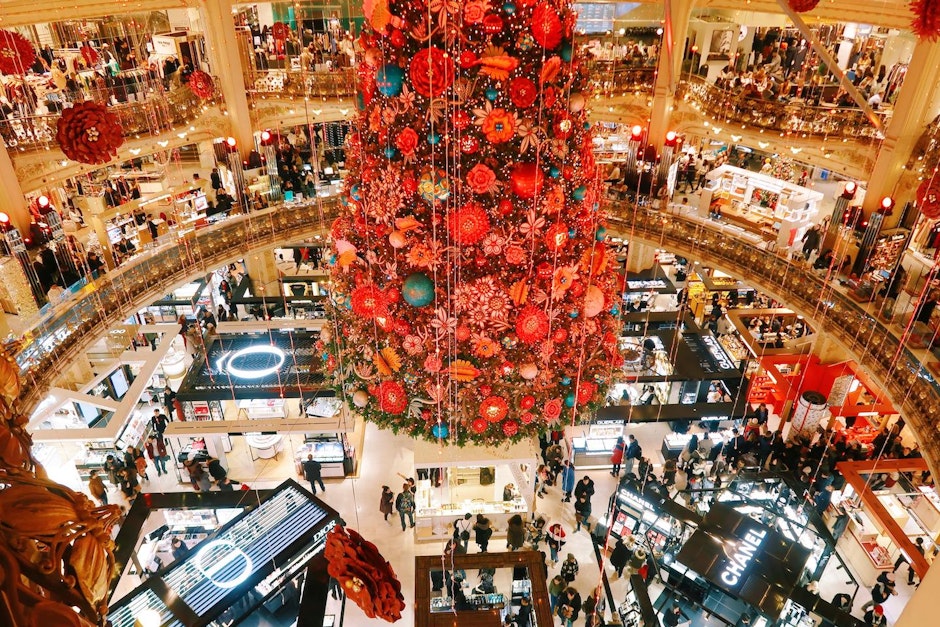Consumers are making 2022 holiday purchases early - here's how OOH can help reach them
If you think the holiday season seems to arrive earlier each year, you’re not mistaken

The seasonal creep we’re seeing this year can be attributed to a number of factors. Amid less than favorable global economic conditions, ad budgets are being re-evaluated, and every media dollar faces scrutiny. At the same time, reaching consumers is more challenging as the world prepares for a recession. Consumers are tightening budgets, with 83% of shoppers expecting to scale back holiday shopping plans and 46% noting their budget is firm, according to an Out of Home Advertising Association of America (OAAA) report.
To this end, capturing their attention requires a different and more flexible omnichannel strategy that can benefit from programmatic digital-out-of-home (pDOOH) advertising. Such a dynamic approach allows advertisers to adapt creative messaging to current market conditions, among many other benefits. This could mean offering a new promotion based on current inventory of the advertised product or opting to move the campaign to displays in areas where it will reach new traffic. pDOOH campaigns can also be quickly deployed, meaning it’s not too late for advertisers to integrate OOH into holiday omnichannel ad plans.
The power of pDOOH
Contextually relevant ads positively influence audience recall and lead to greater purchase intent and brand favorability, but having the right technology in place to drive the delivery of these messages is crucial. Thankfully, pDOOH technology is rapidly evolving with demand-side platforms (DSPs), making it easy to trigger ads based on real-time contexts (i.e., weather, time of day, sports scores, bus and train schedules, etc.) across OOH displays.
Even better, these screens are stationed in optimal locations along the consumer journey – roadside, transit, retail, EV charging stations, office buildings, etc.). An OAAA study found that 52 percent of participants noticed street-level ads with directions to a business. What’s more, 66 percent of shoppers expressed a desire for ads that feature convenience or location information, further supporting the value of SOOH.
Image courtesy of Unsplash
As a mass audience medium, OOH also reaches a broad range of consumers, often in environments where they are more prone to make a purchase. With a wide variety of screen types, including large-scale, anamorphic LED screens, and interactive displays, OOH supports more dynamic creative that can capture an audience’s attention in ways that personal device ads can’t. OOH activations are only getting more innovative, and can be used to reinforce ads previously targeted at audiences across other channels or vice versa, to reach them across the complete consumer journey.
Making the most out of pDOOH this holiday season
pDOOH advancements are helping to streamline the ad buying process for these kinds of activations, allowing buyers to turn around campaigns quicker than ever and shift budgets on the fly to capitalize on key seasonal moments like Black Friday and Cyber Monday, among others. The speed and flexibility it provides also allow buyers to swap out content or shift budgets as needed to highlight new promotions or adapt messaging to current events.
Consumers also tend to trust OOH more than any other channel, especially after years of being followed and retargeted on online and mobile platforms, and the medium delivers incredible value. Each OOH ad dollar generates an average of $5.97 in product sales, and the medium produces a higher return on investment (ROI) than other channels, according to OAAA. pDOOH compounds this tremendous value and provides exceptional cost efficiency by optimizing how, when, and where consumers receive contextually relevant messages.
Image courtesy of Unsplash
It may seem like a no-brainer, but ads highlighting holiday savings will resonate best with consumers this year, as many shoppers plan to cut back on holiday celebrations and gifts. As an OAAA webinar reported, consumers are also more likely to buy from companies that recognize the impact of inflation and express an understanding of the harsh economic times in which we currently live. With that in mind, leaning into pDOOH advertising with content that promotes special offers as consumers move throughout their days is a smart strategy this holiday season.
OOH provides a giant creative canvas for ideas that just aren’t as impactful on a mobile device, living room TV, or even in a magazine. Think about the OOH inventory available to you and how you can maximize it. Opting for more cutting-edge displays in high-traffic areas will not only help your creative shine, but also let you interact with audiences on a deeper level. Location is another consideration. When located near a business, OOH media can drive foot traffic in your store or stores where your brand is sold and further brand awareness.
Even if you’re looking to draw attention to your website or mobile app, OOH ads can boost cross-channel engagement. According to the OAAA, incorporating OOH increases online activations by up to six times the expected results. Audiences can easily be targeted on DOOH screens in a variety of environments, and given QR codes, URLs, or other call-to-action strategies to drive consumer engagement on other channels. Perhaps your business is located near an EV charging station, and it makes sense to advertise a promotion to audiences there that consumers can cash in at a nearby store or via an e-commerce site. Or, you’re a restaurant in a mixed-use building with elevator screens that you can use to drive audiences to your business or restaurant app for ordering. The potential is unending if you’re willing to explore and investigate.
Considering the value of pDOOH and a challenging economic forecast, it may make sense to re-evaluate that holiday ad plan you built months ago and make strategic adjustments. As you do, making pDOOH part of your larger omnichannel strategy should be top of mind. For more details on making your ad campaign stand out this holiday season and beyond, get in touch with Broadsign.

